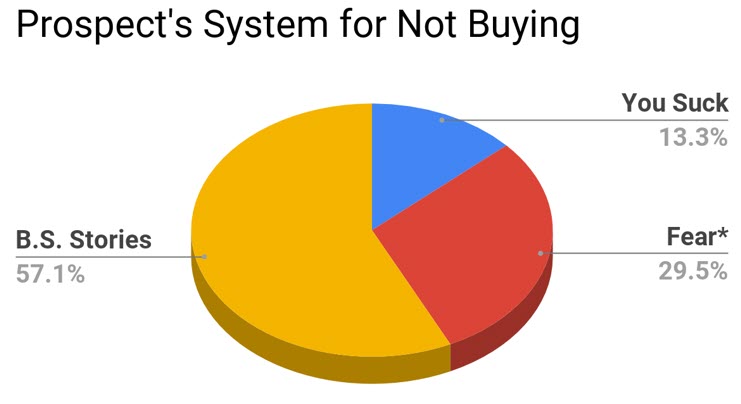Has anyone ever told you how evil you are?
Oops.
I mean how evil they THINK you are?
As a marketer, it probably happens more than you think.
(Civilians don’t really understand what we do.)
I remember sitting in church with my family a few years ago… when the preacher — who happened to be my father-in-law — started railing on the vile schemes of marketers.
Free trials, for example.
Marketers know some people won’t cancel before the free trial is over, so why do we “trick” people into spending money that way?
That part of the sermon probably only lasted 2 or 3 minutes… but it seemed much longer.
I know marketing isn’t evil — I dealt with that false belief long ago.
But it was still uncomfortable.
Good thing the preacher didn’t call me out by name.
The church is full of civilians who don’t understand what I do, so I’m pretty sure no one knew he was talking about me.
He probably didn’t even know he was talking about me!
Has anything like that happened to you?
(If you have a good story, please reply to this email and share. I’d love to hear it.)
Let me clear up a few things.
Copywriting and marketing are NOT evil.
You probably already know that or you wouldn’t have signed up to hear from me.
Marketing is leadership… and I know you’re using it to improve people’s lives
Better marketing = more lives transformed for the better.
If you’re selling something that helps people, promoting it aggressively makes the world a better place.
Free will always wins.
We marketers can’t force anyone to act against their own best interests.
We can’t make them do what they don’t want to do.
All we can do is paint a clear picture of a specific outcome our should-be buyer already wants… and make it as easy as possible for him to say “yes”
Jonathan Edwards, an 18th century preacher (which makes him a little older than my father-in-law), wrote that people…
“…always act according to the strongest inclination they have at the moment of choice.“
You make the big bucks when you can create moments of choice where the reader’s strongest inclination is to buy your offer.
Email gives you the best opportunity to create moments strong inclination… over and over
I recorded a video describing a few of my best techniques for doing exactly that.
One of the strategies is what I call intense opportunity curiosity…
Which was the real secret behind the $218,337 5-email campaign I told you about last week.
This video training will be exclusively available to Inbox X-Factor members.
No big sales pitch. I still haven’t written the sales page.
But if you’d like to learn more about how I’ve been making MORE money with email instead of less (which so many people are complaining about these days)…
You’ll want to see the video I’m uploading tomorrow.
Plus, you get weekly email plans… winning subject line templates… and more.
$99 a month (no contracts) is a small investment to help you make your email list significantly more profitable — and to spend less time doing it.
Just one of the ways I’m striving to make the world a better place.


